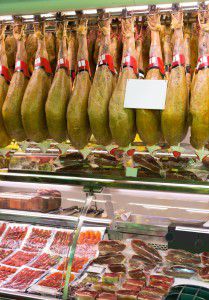Not your average Monday: what’s so special about 29th February?
Happy Leap Day! The 29th of February comes around every four years, but how much do you know about this extra day?
What is Leap Day?
Originally the Sumerians divided the year into 12 months and allocated 30 days for each month. This was adapted by the Egyptians, who realised that this didn’t fit in with the amount of time taken for the Earth to orbit the sun. The Egyptians decided to add five days in at the end of each year to give us the 365 days we have now; however, these five days were just for partying and celebrations – sounds good, right?! The leap year then came about from the Gregorian calendar, with the idea that one day would be added onto February every four years.
Leap years around the world
No one seems to know why it is called a ‘leap’ year, but there are other names for it around the world. In German a leap year is called ‘Schaltjhar’, in Russian it is ‘année bissextile’ and in French it is similar with ‘anno bisestile’. Interestingly in Italian it is called ‘l’ann d’la baleina’ which translates to ‘the whale’s year’, after a belief that whales only give birth during leap years. In many countries a leap year is believed to be bad luck; Russia and the Ukraine believe that getting married or buying a house during a leap year is unlucky. In Taiwan it is considered really unlucky; the Taiwanese go so far as to say that parents are more likely to die during a leap year.
What’s all this about women proposing?
 Perhaps the most well-known leap year tradition is the idea that women can propose to men in this year. This is believed to be introduced by an Irish nun who thought that women had to wait too long for suitors to propose and convinced St Patrick to give women permission to ask a man to marry them once every four years. It was thought that if a woman did want to propose she had to wear breaches or scarlet petticoats in order to do so.
Perhaps the most well-known leap year tradition is the idea that women can propose to men in this year. This is believed to be introduced by an Irish nun who thought that women had to wait too long for suitors to propose and convinced St Patrick to give women permission to ask a man to marry them once every four years. It was thought that if a woman did want to propose she had to wear breaches or scarlet petticoats in order to do so.
In certain European countries it was thought that if a man refused the proposal they should pay a penalty. In Finland they had to buy the lady fabric so she could make her own skirt. In Denmark, the suitor had to buy her twelve pairs of gloves so the lady could hide her embarrassment at not having an engagement ring.
What if you’re born on 29th February?
People born on the 29th have to decide which day to celebrate their birthday for the other three years. However the chances of being born on the 29th of February are 1 in 1,461. For those that are born on this day, the city of Anthony (next to Texas) celebrates the leap year with a four-day festival; this is done to celebrate the leap year babies’ birthdays. There are also Facebook groups for people born on this day, and many restaurants and retailers offer ‘leap day’ deals.
Is it your birthday today? Or did you propose?! Tell us about it!
Which language does Santa speak?
If, like me, you used to expectantly write a long list of improbable demands to Santa each year as a child, you’ll be curious to know what happened to those letters. Oddly enough, it never ever occurred to tiny Nat to question where the (probably unaddressed, definitely unstamped) letter went once it dropped into the post box: after all, if Santa was so magical then he’d surely have solved the small problem of how to access my very important letter.
But when I was recording Greenlandic recently for uTalk and doing some research on the country, I was intrigued to find that my letters actually may have reached Santa, and that he lived in Greenland. Until 2002, letters to Santa from all over the world would collect in a giant red post box in Nuuk and – here’s the exciting part – if they had a return address they’d be replied to by Santa himself (or an elf).
Sadly, Santa went bust in Greenland, and although letters may still end up there, they won’t be processed or answered. But, being super Santa, he obviously had a back-up plan and didn’t just run things from Greenland: Santa has operations going in Iceland, Sweden and Finland too. In fact, all of Scandinavia claims to be Santa’s home, raising the interesting question of which language Santa speaks.
Of course, we all know that Santa travels around the whole world on Christmas Eve and must therefore be fairly proficient in various world languages (he’s probably been dabbling in uTalk‘s Directions topic, available in 128 languages, to help him find his way), but just to prove it, his operation in Finland, still going strong, will reply to letters in up to 12 different languages from around the world. So Santa’s clearly at least a dodecalinguist!
Why not try to be a bit more like Santa this year and learn a new language? You could start off for free with the January uTalk Challengeand, if you really want to emulate Santa, go for the 12 month language challenge. Complete a language by the end of the month, and we’ll give you another free uTalk Essentials for a new language the following month.
Merry Christmas!
Nat
Supermarket Swipe
I’m a Morrisons kind of girl.
And when I look longingly into my box of Yorkshire Tea and see nothing but tealeaf dust, I miss it.
I miss a store layout I recognise. I miss being a ble to identify what things are without imaginative guess work and Google Translate. But most of all, I miss English products.
ble to identify what things are without imaginative guess work and Google Translate. But most of all, I miss English products.
When you are far from home and craving custard, and the mere pronunciation of the word ‘vanilla’ fills shop assistants with mirth, you too will experience saudade at the thought of your local supermarket. Because supermarkets abroad sell all manner of things that you would not expect to find. And asking for help when you aren’t exactly sure what you’re asking for is everything from embarrassing to adventurous.
It’s tricky out there.
My fellow Brits abroad: on returning home, don’t be surprised if you feel the sudden urge to run into your nearest supermarket and pull the fishmonger into a tight embrace. Just make sure he doesn’t have a fish filleter in his hand when you do.
Still, never let it be said that there aren’t delightful discoveries to be made Out There. Here is a selection of my own that I haven’t yet decided if I am looking back on with fright or fondness.
China
China might be a bit of an outlier in the joy of supermarket shopping. The ones I went to were the full several-floor ‘we sell everything you can think of and probably some things you have nightmares about’ flavour, with counters offering up an array of unknowns and unidentifiables.
If you are an avid coffee drinker, it might be wise to take a stash of your own. Those crimes-against-coffee all-in-one sachets of coffee, milk powder and sugar are enough to make any coffee aficionado turn and weep.
Something that truly delighted me in Chinese supermarkets (and yes. I am easily amused) was that you can buy milk in pouches. Rather than the cartons we are used to in the UK, milk here – and expect a wide variety of dairy, soya and rice milk – is often sold in these thick, plastic pouches that have a satisfying squishy feeling when you juggle them in your hands. Not that you should really do that. Unless you want an audience.
Hungary
 Hungary is the land of paprika and sour cream. Paprika comes in different strengths of spiciness and there are either ‘regular’ or ‘sweet’ varieties to choose from. Sour cream (tejfol) has all sorts of uses in both sweet and savoury dishes, and you can buy it in all manner of sizes – from the small cartons arranged like pots of fromage frais, to the litres of the stuff in containers the size of those value packs of magnolia paint at B&Q. (It is also apparently a very effective ‘after sun’, but I’m not sure about that.)
Hungary is the land of paprika and sour cream. Paprika comes in different strengths of spiciness and there are either ‘regular’ or ‘sweet’ varieties to choose from. Sour cream (tejfol) has all sorts of uses in both sweet and savoury dishes, and you can buy it in all manner of sizes – from the small cartons arranged like pots of fromage frais, to the litres of the stuff in containers the size of those value packs of magnolia paint at B&Q. (It is also apparently a very effective ‘after sun’, but I’m not sure about that.)
Supermarkets in Hungary are generally smaller than you may be used to at home, but they are pretty well stocked. For some reason, apples are on the pricey side, but the fact that you can buy cherries (both normal and sour, which are delicious) and all manner of berries for a fraction of the price you’d pay at home more than compensates. Another surprising thing is that Spar is an actual supermarket, rather than the emergency-chocolate-fix kind of place that I am used to.
Spain
 Pig legs. Whole pig legs, right down to hoof, are dangled from ceilings and fanned out on counters in enticing displays. This is not a delicacy, but an everyday food product that you will find in many a Spanish kitchen. Ham is so important to Spaniards you could say it is part of the culture. From jamón serrano to jamón york, and a whole spectrum in between, you will never be short of ham if you need it.
Pig legs. Whole pig legs, right down to hoof, are dangled from ceilings and fanned out on counters in enticing displays. This is not a delicacy, but an everyday food product that you will find in many a Spanish kitchen. Ham is so important to Spaniards you could say it is part of the culture. From jamón serrano to jamón york, and a whole spectrum in between, you will never be short of ham if you need it.
For those of you who like to bake, be prepared to make some product replacement choices. Butter and margarine is available here but since most cook and bake with oil instead, and pour oil on their toast in the morning, you might not find exactly what you were looking for.
Alcohol is incredibly cheap here, and very good quality. Good wine is pretty much a given, and when you can buy nice cava for under two euros, or a can of beer for less than 30 cents, you can wonder at how people aren’t walking around constantly merry all day long.
There is a huge range of disposable products in Spanish supermarkets, including napkins, tissues and kitchen roll. And plates, bowls and cups. They even have the ‘balloon’ glasses in plastic form, just in case you decide on a cheeky gin and tonic on an impromptu picnic.
Finland
Our last whistle-stop on the supermarket tour is in the beautiful Finland, with large supermarkets of enough content to satisfy even the most dithering of customers (me). There are more varieties of sausage here than I have ever seen in my life, delicious rye breads, and very good cheese and salami.
One thing that threw me a little was an ‘addition’ to the toilet tissue aisle that I hadn’t anticipated. Since Finland is the land of the sauna, and more importantly, the all-naked sauna, there are disposable sauna ‘tissues seats’ for you to sit on that you can purchase in multipacks, ready for your public sauna experience. If you have your own sauna, and what self-respecting Finn doesn’t, you should of course purchase your own special sauna ‘pad’, which comes in a range of covers, colours and thicknesses. It is a whole new world.
These items might seem like an odd collection of things, and in many ways they are. But on a day when all you want is the home comfort of knowing in which aisle to find a tin of beans, good tea bags, and a bakewell tart, the call of the home supermarket is strong. Especially the bakery aisle. Oh, how I miss the bakery aisle…
Kelly
An introduction to Finnish
Here at EuroTalk, we love languages (obviously). And we particularly enjoy discovering fun facts about languages; they’re all so different and each has its own unique character. So we’ve decided to share some of them with you, in our new Language of the Week series. Each week, we’ll choose a new language, and we’re always open to suggestions!
Please do get involved – we love to hear from you, so send us your own favourite facts and have a go at our weekly challenge for a chance to win some fun EuroTalk prizes 🙂 You can join the conversation here on the blog, or on Facebook or Twitter, where we’ll be sharing more of our discoveries over the coming few days.
 So this week, we’re starting with Finnish, in celebration of the annual Air Guitar World Championships, which start in Oulu on Wednesday, and may be our new favourite event of all time.
So this week, we’re starting with Finnish, in celebration of the annual Air Guitar World Championships, which start in Oulu on Wednesday, and may be our new favourite event of all time.
Here are a few of the best things we’ve discovered about Finnish this week:
– Finnish is thought to be one of the hardest languages for a native English speaker to learn, because of its complicated grammar, which is nothing like English or any of the other languages we’re used to learning. Finnish words can also look pretty daunting to a new learner, as they’re very long and seem to contain a lot of vowels!
– There is no word for ‘please’ in Finnish – not because Finns are rude, but because they just assume politeness. There is a word which means ‘thank you’, kiitos, which is sometimes used in place of ‘please’, and the other way to indicate politeness is to use the conditional – ‘Would you…’
– Also interesting is that a grandson can be either pojanpoika if it’s the son of a son, or tyttärenpoika if it’s the son of a daughter. The same with granddaughter – pojantytär is the daughter of a son and tyttärentytär is the daughter of a daughter. But don’t panic; you can use just lapsenlapsi, which means ‘child of a child’, for a generic term.
– The word sauna is the most widely used Finnish word in English. There are 3.3 million saunas in Finland, which means there is 1 for every 1.63 people. Visiting the sauna is as normal for Finns as going to the pub is to Brits. It’s also a tradition to jump into the lake outside after a hot sauna. This sounds a little crazy and very cold!
– The Finnish language holds the world’s longest palindrome, and just in case you don’t know what that means, it is a word that can be read the same both ways. And here it is: saippuakivikauppias, which is a dealer in lye (caustic soda). Probably not something you’d say every day, but always useful to know.
– The longest Finnish word is 61 letters long (which is outrageous compared to English’s mere 45-letter longest word) and it is:
entokonesuihkuturbiinimoottoriapumekaanikkoaliupseerioppilas
Which means: ‘airplane jet turbine engine auxiliary mechanic non-commissioned officer student’.
– A Finnish tongue twister is:
Appilan pappilan apupapin papupata pankolla kiehuu ja kuohuu. Pappilan paksuposki piski pisti paksun papukeiton poskeensa.
There is no absolute translation but it’s about a vicarage’s assistant priest and his hot pot of beans, which are boiling on the stove and the vicarage’s fat mongrel who ate up the thick bean soup.
Language Challenge of the Week
So now it’s your turn. Have a go at pronouncing one of the words above, or, for ultimate respect, the tongue twister… Send us your videos on Twitter to @EuroTalk with hashtag #loveFinnish or post a link to your video in the comments below. If we’re really impressed, we’ll send you a code for uTalk Finnish 😉
Oh, and in case you wondered what’s so great about the Air Guitar World Championships…
Valentine’s – it’s not all flowers and chocolates…
Valentine’s Day is here again, and like a lot of people, I’m a bit fed up with it. I’ve lost count of the number of emails I’ve received over the last few weeks, inviting me to use Valentine’s as an excuse to buy everything from chocolates to an iPad – I even got one suggesting I should hire a private jet (yes, really) to surprise my loved one.
 Here in the UK, Valentine’s Day is very much a day for couples, and has become known as a very commercial holiday. The usual traditions are cards (sometimes anonymous), flowers, chocolates and candle-lit dinners. But not all countries celebrate in the same way (or even on the same day). Here are a few alternatives:
Here in the UK, Valentine’s Day is very much a day for couples, and has become known as a very commercial holiday. The usual traditions are cards (sometimes anonymous), flowers, chocolates and candle-lit dinners. But not all countries celebrate in the same way (or even on the same day). Here are a few alternatives:
If you thought celebrating Valentine’s once a year was enough, think again. In Japan February 14th is just the start, when women give chocolate to the men in their life. This doesn’t have to be just boyfriends and husbands but can also include co-workers and friends. Then on March 14th, which is known as ‘White Day’, the men give the ladies a gift of greater value (sounds good to me!). Going one step further, in South Korea, the 14th of every month is a love-related day of some kind. On April 14th, anyone who didn’t get a gift in February or March is expected to go out and eat black noodles in recognition of their single status.
In some areas of Latin America, Valentine’s is known as ‘Dia del Amor y la Amistad’ (Day of Love and Friendship). It’s celebrated with ‘Amigo secreto’ (Secret friend), which is similar to the Secret Santa tradition at Christmas and involves buying a gift for a friend selected at random.
In Catalonia, Spain, loved ones exchange gifts on Valentine’s Day and also on 23rd April, which has become known as ‘El Dia del Llibre’ (Day of the Book) because it’s the day that both Miguel Cervantes and William Shakespeare died (in 1616). Women traditionally give men books as gifts, while the men reciprocate with either a book or a rose. Bookshops and cafes hold book-signings and public readings to celebrate the day.
Finland celebrates ‘Ystävänpäivä’, which means ‘Friend’s Day’. Although it is becoming an increasingly popular day on which to get engaged, the main focus of the day in Finland is to celebrate friendship of all kinds, and presents are exchanged between friends as well as lovers.
And finally, France. A (now banned) custom used to be held, known as the ‘loterie d’amour’. Single men and women would enter houses facing each other and call to one another until they were all paired off. Afterwards, any women who were left single would build a huge bonfire and burn images of men who had hurt them, whilst screaming abuse at them. Eventually the ‘loterie’ was banned by the French government. I wonder why.
So, Happy Valentine’s Day everyone, wherever you are and whether or not you’re part of a couple – we all have special people in our lives, so let’s celebrate them 🙂 Will you be doing anything special or unusual to celebrate? Let us know!
Liz

